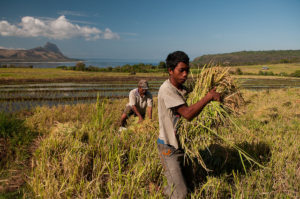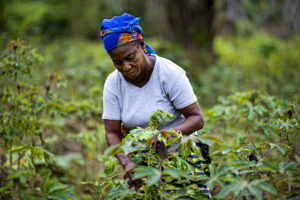
By Meine van Noordwijk, Coordinator of the FTA Flagship on Landscape management for environmental services, biodiversity conversation and livelihoods
Per definition, we have three types of partnerships within FTA: The partnerships for research, the partnerships for impact, and the partnerships for capacity development. The three guiding values are legitimacy, salience, and credibility.
In partnerships that are primarily for research we work to get more credible and higher quality science outputs.
We have partnerships that are primarily aimed at the salience aspect which means that whatever is done has the chance to modify policies, to be picked up at practical decision levels. We do the research and somebody else implements it. We need to be upfront in dialogue with whoever might possibly implement it to make sure that what we do is actually relevant for them.
Also read Influence flows both ways, by Fergus Sinclair, Coordinator of FTA Livelihood systems research
Under the premise of legitimacy we specifically find local partners and make sure that whatever knowledge we produce is in tune with local issues, is understood at local level, has local voices that can represent that story.
These three types of partnerships were traditionally seen as following one another, so science came first and the others followed.
But now we see them as being of equal importance. If we want our science to be relevant and to be used, we have to be fully tuned in with whoever could use it. Otherwise there’s an awful lot of good science that stays on the shelves because it doesn’t have the people who can represent it.
Also, in many cases, the partnerships within FTA don’t follow the lines of our Flagships but go across our themes.

Academic partnerships
In terms of partnerships that relate to academic credibility we have just as many and divers ones as the other flagships so I only want to highlight a few.
One thing that is specific for our Landscapes Flagship is that we are part of something fairly big called the Ecosystem Services Partnership (ESP) which started off as a network between European an North American universities, working on valuation of ecosystem services. We connected with them to have a more explicit tropical developing country focus.
One of our staff is organizing the Asian ESP network, and we are involved in the African ESP network which will have its first meeting in Nairobi on 21 November.
An interesting one is an informal group of scientists from the Center for International Forestry Research (CIFOR), the World Agroforestry Centre (ICRAF) and other institutions who believe that forests and climate change are not just about carbon.
The aspect of rainfall is maybe even more important. And we want to get that on the table. Our upcoming paper “Cool insights for a hot world” is about to come through. It’s a group work that covers trees, forests and water, the hydroclimate.

Partnerships for impact
Under the category uptake or use of knowledge in policy arenas we have a number of people involved in the Intergovernmental Science-Policy Platform on Biodiversity and Ecosystem Services (IPBES) that is in the middle of its first major assessment now. Some scientists that are also funded by FTA are involved in that network. We want to make sure that our research gets connected with other policy-relevant work and keep track of emerging questions that we should take onto our agenda.
We also work with IDH The sustainable trade initiative, a grouping of public-private partnerships that support sustainable trade, sustainable landscape interfaces. They are also connected to the trade and investments Flagship 5.
We sometimes work with them as contractors, sometimes in partnership, trying to influence their agenda. This is only one of many partnerships with organizations that are at the interface of private sector and public interest in sustainability.
Another partnership that works well is the collaboration with Danone on some diagnostics of landscapes, asking questions like: Where do they get their water from? and Where are they trying to improve their relationship with the people in that landscape?
We learn from them what really are the issues of a drinking water company that interacts with the landscape and wants to help improve the overall functioning of that landscape.
Partnerships for capacity development
Where the main motivation of a partnership is legitimacy we often deal with capacity development, working under the assumption that even the best knowledge and science, even if it is policy-relevant, will be ignored if it doesn’t have local voices.
In this category we often collaborate with national partners, national research institution such as the Research, Development and Innovation Agency FORDA in Indonesia, or the network of South East Asian universities SEANAFE that want to bring agroforestry into their curricula.
It’s good for us to connect with them on the ground and it is important that whatever science emerges from FTA research is also communicated by local voices. We need the scientists in partner countries to develop their own line of research within a certain topic and get it connected with others globally.
A good example is the recent open letter by 139 scientists contesting the Malaysian governments position on peatlands, in which Malaysian scientists were very vocal.











